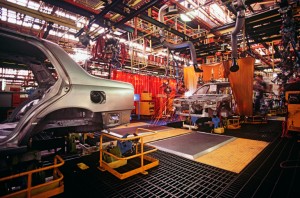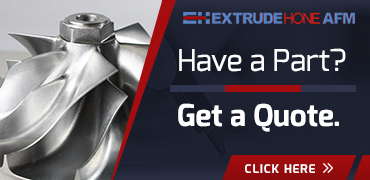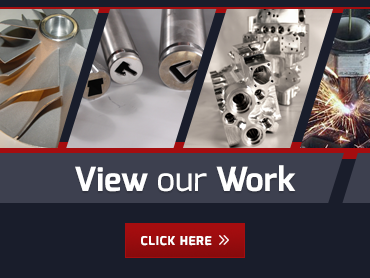 The automotive industry is one of the most important industries that Extrude Hone AFM serves every day. We are Southern California’s experts in extrude honing, which can bring tremendous benefits to any automotive industry company. Here are the most frequently asked questions we receive from workers in the automotive industry:
The automotive industry is one of the most important industries that Extrude Hone AFM serves every day. We are Southern California’s experts in extrude honing, which can bring tremendous benefits to any automotive industry company. Here are the most frequently asked questions we receive from workers in the automotive industry:
Before I send my parts in to Extrude Hone AFM, how should I prepare them?
Properly preparing you parts for extrude honing is absolutely essential. Extrude honing is done on the bare casting, so make sure you completely disassemble your component and remove everything from it, especially electronics.
How long will it take for my part to be extrude honed?
At Extrude Hone AFM, we completely understand that time is money, so we work as efficiently as possible without sacrificing perfect workmanship. In most cases, aluminum parts will be done in 7-11 working days, and cast iron parts will be done going through the process in about 3-4 weeks.
During extrude honing, how much material is removed?
To improve flow, up to about 1 millimeter, or .040 inches, is removed. That may not seem like a lot, but it really does make a difference.
If I can only extrude hone one part, which one should I choose?
You’ll see the biggest improvement in performance if you send your intake manifold in for extrude honing. For more information, see the Automotive Page.
For fuel atomization, isn’t a rough surface finish in the intake port better?
Actually, no—fuel atomization relates more closely to the function of a carburetor, or injector, not the manifold or the intake port. Roughing the finish doesn’t help at all. To be certain of this, we replaced the top plate of an aftermarket “Crossfire” intake manifold with a sheet of lexan so that we could see fuel and air moving in the manifold as the engine ran. We found that while idling (500-700 rpm), we could see a little puddling in some area, but any increase in rpm result in an evacuation of the plenum area. There was absolutely no time for anything to collect because the vacuum pressure was just too great, no matter the roughness or smoothness of the finish.
How much increase in horsepower will there be after extrude honing?
In nearly all cases, flow capability will be increased by about 25% after extrude honing, and depending on how your combination is configured and tuned, the increase in horsepower will vary.
Can you flow match my parts?
Parts can’t be bolted together while being extrude honed, but they can still be easily matched for flow. How we accomplish this is by matching parts to the gasket before extrude honing, so after the process is complete, they will have the exact same dimensions.
Should I change the valve guides in my cylinder heads before or after sending them to Extrude Hone AFM?
Change the guides before sending them to Extrude Hone AFM because the process of removing the old guides and installing new ones will likely compromise the surface finish in the ports. Changing them before sending your component to Extrude Hone AFM will ensure you reap all the benefits of the extrude honing process.
Should I do a valve job before sending my component to Extrude Hone AFM?
Again, do it before sending it to Extrude Hone AFM. The valve job will put a chamfer with two sharp edges on the valve seats, which will create a radius at these edges, increasing flow at low lift. Your valves are at low lift the majority of the time, so flow at that position is always improved.
Which is better: Extrude Hone my stock exhaust manifolds or use an aftermarket Header?
Generally, it’s better to choose an aftermarket Header. In most cases, it’d be a better deal for the money, and from a standpoint of flow capability.
No amount of extrude honing will ever make a cast exhaust manifold outflow a header. There are only 3 scenarios where anyone would attempt to extrude hone a cast exhaust manifold:
- A race restriction that only allows the stock exhaust
- An engine that is not addressed by any aftermarket manufacturers
- The enthusiast who wants original components only
How about extrude honing headers?
This is almost always not possible because the weld between the tubing and the flange would be disrupted and cause leaks after extrude honing. The surface finish is already fairly good in most headers, so extrude honing isn’t necessary in most cases.
Here’s a handy tip: When you look into a header, notice the weld bead of about 1/8 of an inch all around. That amounts to a loss of about ½ of your flow area, which isn’t good for flow at all.
However, what can be done is to put a weld bead on the outside of the tubing to the flange. Then, blend down the interior weld beat to a more accommodating angle, creating a tapered entrance to the tubes and setting off a venturi effect to your exhaust flow.
How do you control the amount of material that is removed during extrude honing?
At Extrude Hone AFM, we are absolutely meticulous about making sure our process is applied perfectly to each component we apply it to. That’s why each and every application destined for Extrude Hone AFM has to be individually engineered and developed. There are a number of variables that we take into consideration when crafting the extrude honing process for each component, including:
- The tooling
- The media flow pressure
- The viscosity
- The abrasive concentration of the media




